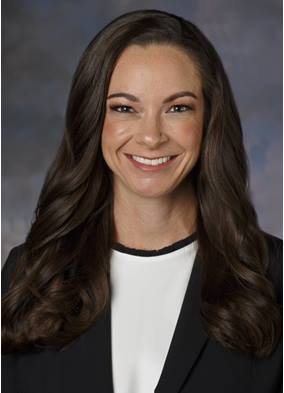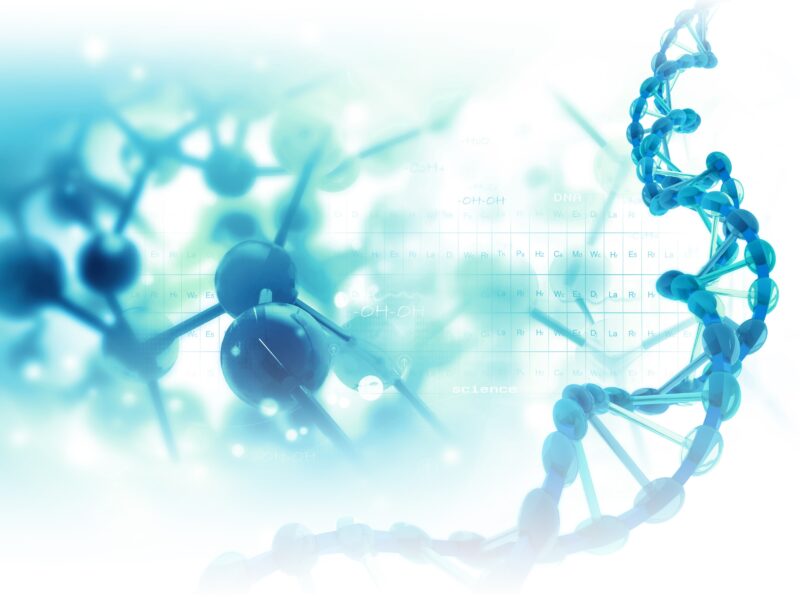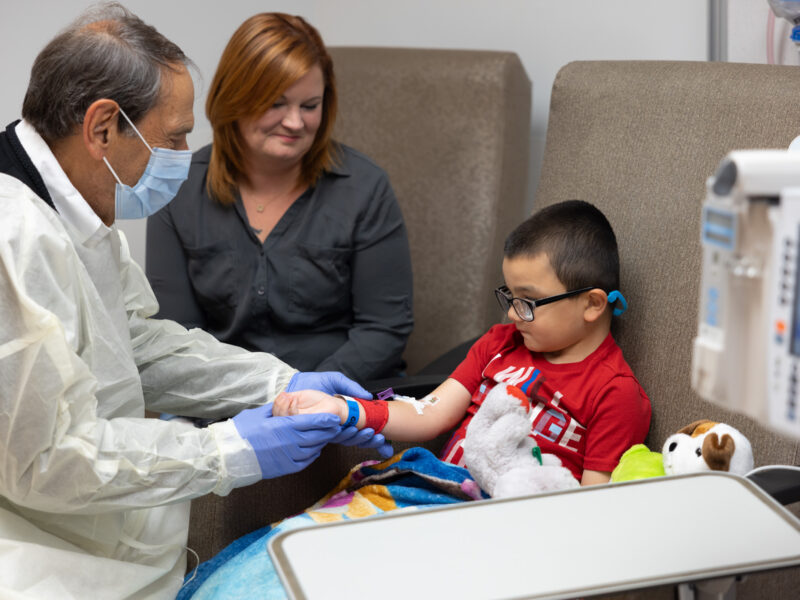Featured Researcher — Allison Bradbury, MS, PhD
Featured Researcher — Allison Bradbury, MS, PhD https://pediatricsnationwide.org/wp-content/themes/corpus/images/empty/thumbnail.jpg 150 150 Katie Brind'Amour, PhD, MS, CHES Katie Brind'Amour, PhD, MS, CHES https://pediatricsnationwide.org/wp-content/uploads/2021/03/Katie-B-portrait.gif- August 10, 2022
- Katie Brind'Amour, PhD, MS, CHES
Allison Bradbury, MS, PhD, is an accomplished principal investigator in the Center for Gene Therapy at Nationwide Children’s Hospital, but her introduction to medical research and the field of rare neurologic diseases wasn’t at school — it was in her great uncle’s garage, when his work as a veterinary pathologist led him to identify an inherited genetic mutation in cats with neurologic disease and ataxia.
After significant legwork tracking down the parents of the sick cats — gathering them from community members and taking care of them in his garage with the help of Dr. Bradbury’s great aunt — his suspicion of lysosomal storage disease was confirmed, and he published evidence of GM1 gangliosidosis in Siamese cats in Science in 1971. His discovery of GM2 gangliosidosis in cats came shortly thereafter.
It’s a remarkable family story, to be sure, and one that made a strong impression on Dr. Bradbury. Her own neuroscience research career began at Auburn University conducting preclinical studies involving the same GM2 cat model discovered by her uncle in the 1970s, and it is this debilitating and deadly neurodegenerative condition that she first helped develop a gene therapy for, which is currently in clinical trials. Dr. Bradbury has since played a key role in gene therapy development for globoid cell leukodystrophy (Krabbe disease), also now in clinical trials.

At Nationwide Children’s, Dr. Bradbury focuses on developing new delivery mechanisms, improving vectors and establishing novel ways to offer gene therapies to children with devastating neurologic diseases. She continues expanding her focus to include additional methods, models and diseases — one of which was initiated after a serendipitous connection with a local family.
Read on to learn more about Dr. Bradbury and her work.
What was your path to your current role?
In 1971, my great uncle published a paper in Science describing a Siamese cat with GM1 gangliosidosis, a rare, inherited and always fatal pediatric neurodegenerative disease. Fast-forward almost four decades, and I began pursuing my inherited passion for neuroscience and gene therapy to cure devastating pediatric disease.
I completed my doctorate in the lab of Douglas Martin, PhD, director of the Scott-Ritchey Research Center at Auburn University. My doctoral research focused on development of adeno-associated viral (AAV) gene therapy for GM2 gangliosidosis using the same models my great uncle discovered decades prior. After years of preclinical efficacy and safety studies, we successfully translated that gene therapy from bench to bedside. To date, more than 15 kids with GM1 or GM2 have been treated with the gene therapy we developed, and this is one of my proudest accomplishments.
Following that gratifying start, my postdoctoral research was completed at the University of Pennsylvania as a National Institutes of Health (NIH) National Research Service Award (NRSA) (F32) postdoctoral research fellow. I evaluated disease mechanisms and developed gene therapy approaches for Krabbe disease, a devastating pediatric neurodegenerative disease similar to GM1 and GM2. Based on those formative preclinical studies, babies with Krabbe disease received life-saving gene therapy for the first time earlier this year.
I received the NIH Pathway to Independence award (K99/R00) and joined the Center for Gene Therapy in January 2020. My lab is dedicated to understanding disease mechanisms and developing therapeutic approaches for pediatric neurological disorders. Advances in AAV vectors have led to safer and more efficient viral vehicles to deliver therapeutic transgenes in a single injection, and gene therapy is now a favorable therapeutic intervention for monogenic diseases. A primary focus of my lab is improving how AAV vectors target myelinating cells so that we can advance therapeutic outcomes for leukodystrophies and other white matter disorders.
The goal is for our research to be truly translational in nature, with a commitment to safely and efficiently moving therapies for pediatric disorders into the clinic.
Why did you decide to pursue your work at Nationwide Children’s?
All too often, gene therapies are developed in the lab, but there are not the resources available to get them to clinic. Nationwide Children’s has unmatched success in translating gene therapy to the clinic for pediatric disorders. The work of Jerry Mendell, MD, attending neurologist at Nationwide Children’s and the pioneer of gene therapy for muscular dystrophies and spinal muscular atrophy (SMA); Kevin Flanigan, MD, director of the Center for Gene Therapy and a leading expert in therapies for mucopolysaccharidoses (MPS) and muscular dystrophy; and Kathrin Meyer, PhD, principal investigator in the Center for Gene Therapy and an expert in delivery mechanisms for SMA and Batten disease gene therapies, among many other successes at Nationwide Children’s, were a beacon for me. I wanted to establish my lab in a place where I could get therapies across the finish line.
In addition to the people, Nationwide Children’s has critical resources such as the Animal Resource Core, which makes it possible to effectively monitor and care for our animal models with advanced equipment and expertise, and Andelyn Biosciences, which spun off from Nationwide Children’s and offers unmatched viral vector production to speed gene therapy treatments to the clinic. We also have the support of regulatory experts, outcome measure specialists and technology commercialization teams to help navigate the landscape between the lab and the clinic. Finally, we have an incredible biospecimen core that can assist with collecting, expanding and banking patient samples.
Knowing that Nationwide Children’s has all of this under one umbrella made it hard to imagine a better place to advance my gene therapy program.
What is your favorite part of your job?
My favorite part is the potential to have a transformative impact on the lives of children with diseases once thought to be incurable. You just can’t beat that.
My second favorite part is always learning. The science is constantly advancing, and I have to keep up. It means I’m always adapting to new techniques, new technologies, new experimental designs and new policies that ultimately improve the science.
How does your research serve our patients and our community?
Fun Facts About Dr. Bradbury
What do you usually eat for breakfast?
A blueberry English muffin.
What would be your dream job if you weren’t working in research?
I think I’d be a pilot. All of the men in my family, other than my great uncle, have been pilots. My dad, uncles and cousins were in the Air Force before becoming commercial pilots. My grandfather restored and maintained planes from World War II.
What’s your favorite food?
Pizza.
Favorite way to relax?
Boating. We have a boat and I like to go out to take sunset cruises. We use the Scioto Boat Club when we have to stay close by, but I love to travel to lakes when we have more time. We just went to Lake of the Ozarks.
Favorite thing you’ve bought this year?
They’re not tangible things, really, because I would rather buy experiences. I’d have to say concert tickets and when we rented a house at the lake for a week with my family.
First and foremost, I think we give patients and their families hope. Often, when patients are diagnosed with a rare, inherited neurological disease, reality as they know it ceases to exist. The parents suddenly must become experts in a disease they had never heard of and medical procedures they never wanted to know about. They’ll turn to the scientific community to see what is known about the disease, whether there are any clinical trials and what might science have to offer their child. And that’s where we, as researchers, come in.
We have projects in my lab in all stages of maturity, from development of new disease models to trying to understand more about the disease, and from working with the U.S. Food and Drug Administration (FDA) on investigational new drug applications to having gene therapy products currently in the clinic — transforming the lives of children who would not otherwise live to see their fifth birthday. Ultimately, we hope that the gene therapy products developed in our lab improve the outcomes of children with numerous devastating diseases.
For example, I recently began work on an ultra-rare leukodystrophy after connecting with the parents of a Columbus boy with this disease. There are no current models for the disease, but my lab has now collected fibroblasts and blood cells from three patients. From there we will derive induced pluripotent stem cells, develop cerebral organoids (“brains in a dish”) and begin learning more about the disease. We’ll be able to do single-cell sequencing, study pathways, screen therapies and see patients in the clinic.
This is possible through collaborations with other passionate researchers and physicians at Nationwide Children’s, including Mark Hester, PhD, principal investigator in the Institute for Genomic Medicine, and Margie Ream, MD, PhD, attending pediatric neurologist. Excitingly, using the Genetically Engineered Mouse Modeling Core at The Ohio State University, we have recently made big advances in developing the first viable mouse model by using actual patients’ genetic mutations. This will be critical in translating a therapy to the clinic.
What’s next for your research?
Through our findings in Krabbe disease, we figured out how to get the gene therapy into the cerebrospinal fluid space to normalize levels of the necessary protein in the central and peripheral nervous systems. This has allowed us to continue developing gene therapies for other leukodystrophies, such as vanishing white matter disease and TBCD. However, this also opened big opportunities for targeting peripheral myelinating cells, and we recently secured funding from the Gilbert Family Foundation to work on a gene therapy for neurofibromatosis type 1, a genetic childhood disease that results in tumors on peripheral nerves. With recent funding from the Simons Foundation Autism Research Initiative (SFARI), we are also currently optimizing and validating a targeted gene therapy approach for SLC6A1-related neurodevelopmental disorder in collaboration with Dr. Kathrin Meyer. I expect these therapies using more targeted approaches will bring great results for children with a variety of rare diseases.
I hope to keep moving the needle toward a cure for rare diseases that are often neglected. Advances in genetic medicine, such as whole exome sequencing, have revealed more than 7,000 rare diseases, and that number is going to keep growing. Many of these diseases remain unnamed, understudied, underfunded and incurable. As technologies continue to evolve, I want to continue safely and efficiently moving therapies into the clinic for pediatric disorders.
About the author
Katherine (Katie) Brind’Amour is a freelance medical and health science writer based in Pennsylvania. She has written about nearly every therapeutic area for patients, doctors and the general public. Dr. Brind’Amour specializes in health literacy and patient education. She completed her BS and MS degrees in Biology at Arizona State University and her PhD in Health Services Management and Policy at The Ohio State University. She is a Certified Health Education Specialist and is interested in health promotion via health programs and the communication of medical information.
-
Katie Brind'Amour, PhD, MS, CHEShttps://pediatricsnationwide.org/author/katie-brindamour-phd-ms-ches/April 27, 2014
-
Katie Brind'Amour, PhD, MS, CHEShttps://pediatricsnationwide.org/author/katie-brindamour-phd-ms-ches/April 27, 2014
-
Katie Brind'Amour, PhD, MS, CHEShttps://pediatricsnationwide.org/author/katie-brindamour-phd-ms-ches/April 27, 2014
-
Katie Brind'Amour, PhD, MS, CHEShttps://pediatricsnationwide.org/author/katie-brindamour-phd-ms-ches/April 28, 2014
- Posted In:
- Featured Researchers







